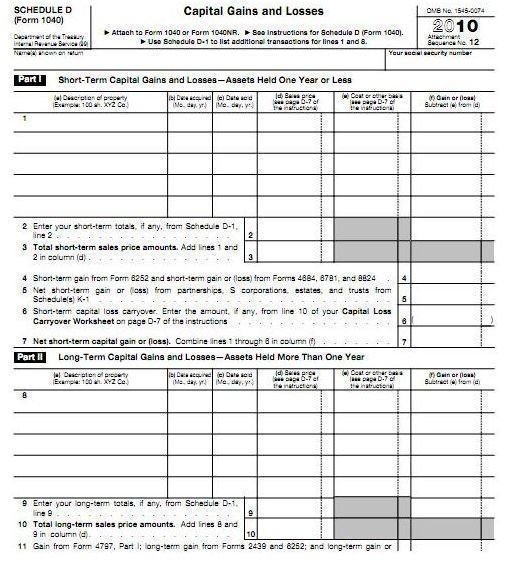Calculating the Cost Basis of Stock Funds for Tax Purposes
Stock Funds and Taxes
Gains from stock mutual fund investments can result in several types of tax reports. A fund distributes capital gains and dividends each year, which are reported on your tax return. After claiming and paying taxes on these distributions, it is important to calculate the cost basis of stock funds for tax purposes.
The cost basis of stock fund shares is a factor when fund shares are sold. Capital gains or losses are determined from the difference between the share price at the time of sale and the cost basis per share of the shares sold. For a stock mutual fund investor, calculating the cost basis is only required when fund shares are sold. If no shares are sold, there is not a taxable event and there is nothing to report to the IRS.
Complications of Cost Basis
The tax rules divide capital gains and losses into short term and long term gains or losses. Long term capital gains and losses are from assets owned for more than a year before they are sold. Short term assets are owned for less than a year. The reinvestment of dividends and capital gains in a stock fund can result in different groups of shares that are currently long term and others that are short term holdings.
For mutual fund investments, the IRS allows an investor to use the average cost per share as the basis for any shares sold. If a partial amount of the shares is sold, the longest owned shares are considered the ones sold. If the entire account is sold, the number of shares owned for more than a year is long term. Shares owned for less than a year are short term.
Once a mutual fund investor has selected the average cost method to report mutual fund gains or losses, he/she cannot switch to another reporting method such as first-in-first-out (FIFO) or designated shares.
Calculating Cost Basis
The cost basis of a stock fund account is the amount of money you invested plus the dollar amount of any reinvested capital gains and dividend distributions. A quick example: An investment of $10,000 was made into the Really Great Growth Stock Fund two years ago. Since the investment was made, the fund has paid $500 in capital gains and $500 in dividends. All distributions were reinvested into more fund shares. The cost basis of this stock fund account is now $11,000.
If the investment in the fund was sold, there would be a taxable capital gain if the value of the shares sold was greater than $11,000 and a capital loss if the result of the sale was less. The cost basis per share is calculated cost basis divided by the current number of shares in the account. Cost basis per share can be used if only a portion of the shares in a stock fund account is sold.
Tracking Cost Basis
A stock mutual fund may pay dividends four times a year and capital gains once a year. Over several years, this activity can result in a lot of share purchases. If the investor is also making regular investments, the number of transactions rapidly becomes large. It is important to keep a permanent copy of each year’s end mutual fund statement. This statement lists all of the transactions for the year. A spreadsheet with a running total of shares, dollar amounts, and average cost per share is useful when it is time to calculate taxes on sold fund shares. The mutual fund company may also offer the service of calculating average cost basis.
References
Tax Guide for Investors: Selling Mutual Fund Shares https://www.fairmark.com/mutual/selling.htm
Costbasis.com: Mutual Funds https://www.costbasis.com/mutualfunds.html
